
Johan De Haes
Test driver
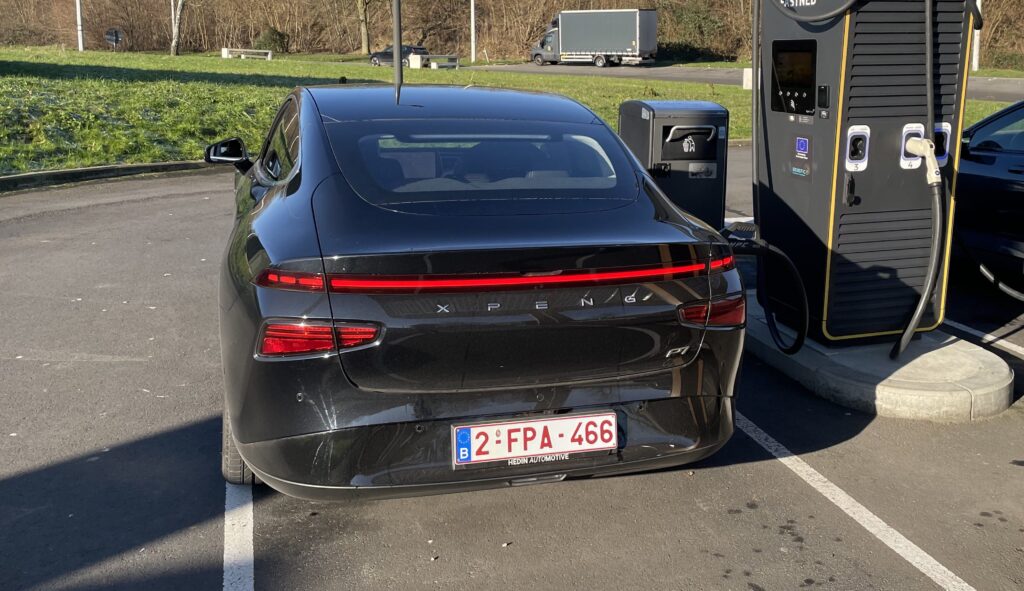
In this range test with the XPENG P7 RWD Long Range, I want to discover the range in real driving conditions. I am going to test the driving range on the highway to find out the minimum driving range of this car. I am also going to do a second driving range test at lower average speeds in the city to know the minimum range. I also wanted to know how long it takes to charge the battery on a fast charger.
This is the XPENG P7 RWD Long Range with the 82.7 kWh battery (usable net capacity). The XPENG P7 RWD Long Range has a power output of 276 hp. It goes from 0 to 100 km/h in 6.7 sec. XPENG talks about a WLTP driving range of 567 km. In the case of the test car, at full battery (100%), it gave an estimated driving range of 448 km. But that is based on a previous driver’s drive, so that says little about the driving range I will effectively achieve.
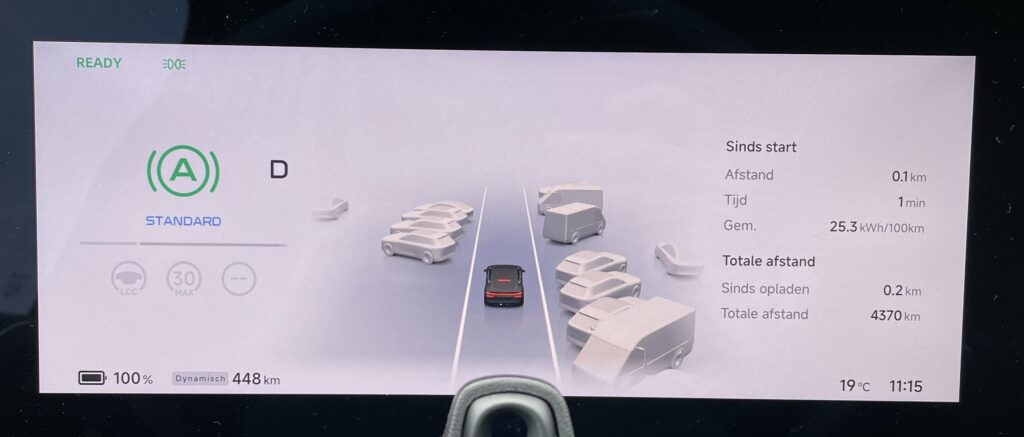
I will first test the range at higher average highway speeds. I want to know what the minimum range of this car could be. At the beginning of this part of the test, the battery is at 94%. I base my estimated range on average consumption and net battery capacity. I did the test in January and it was between 5 and 7 degrees. So pretty cold temperatures.
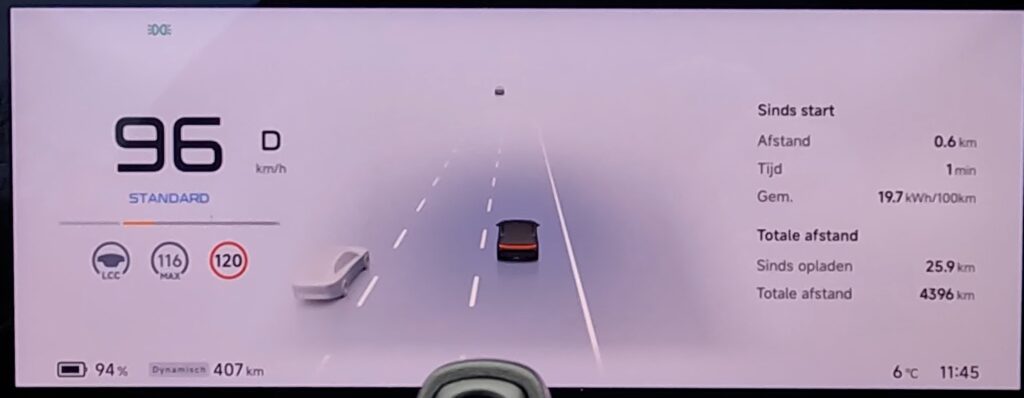
The very first bit of testing was about 20 km of reasonably smooth driving on the E40 between Ghent and the Brussels ring road. During this drive, the consumption came out to 19.8 kWh which means an estimated range of 418 km.
 Next was a stretch on the Brussels ring road towards the junction with the E411 to Namur. At the next measuring point at 55 km, the consumption had dropped to 17.9 kWh representing an estimated range of 462 km. During this stretch of the test, we were also often in slow-moving traffic.
Next was a stretch on the Brussels ring road towards the junction with the E411 to Namur. At the next measuring point at 55 km, the consumption had dropped to 17.9 kWh representing an estimated range of 462 km. During this stretch of the test, we were also often in slow-moving traffic.
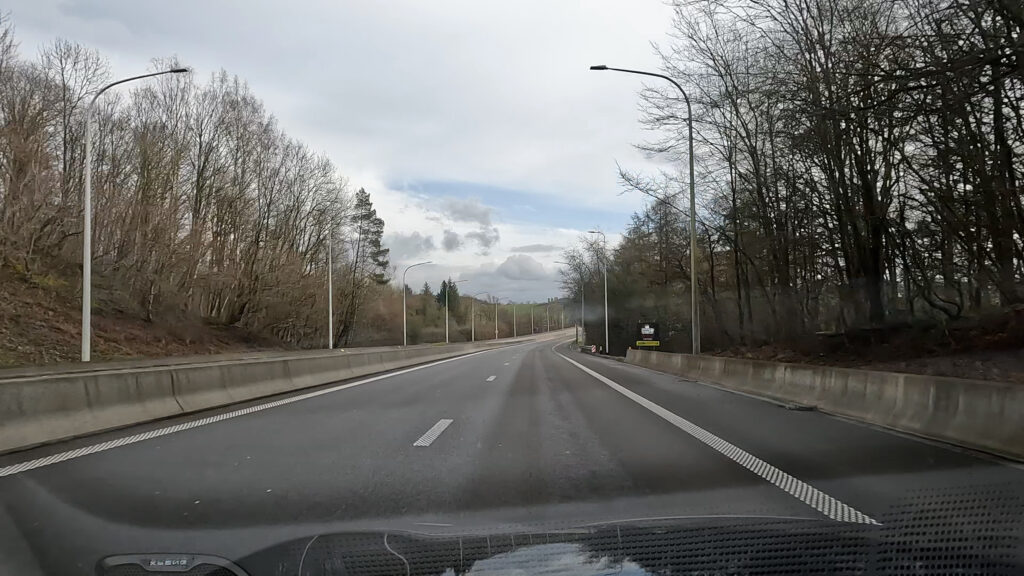
Then the journey towards Marche-en-Famenne began. Consumption at fairly constant speeds of 120 km/h came to 18.4 kWh. In the meantime, the battery had dropped to 66%. The estimated range on the highway based on consumption of 18.4 kWh is therefore 449 km.
| Battery% | Distance driven (km) | Consumption (kWh) | Temperature (°C) | Estimated range (Km) |
|---|---|---|---|---|
| 94% | since start | 6 | start test | |
| 90% | 20,1 | 19,8 | 6 | 418 |
| 84% | 55,4 | 17,9 | 7 | 462 |
| 81% | 71,9 | 17,9 | 6 | 462 |
| 76% | 100,2 | 17,8 | 6 | 465 |
| 70% | 123 | 18,3 | 6 | 452 |
| 66% | 140,6 | 18,4 | 5 | 449 |
Now let’s do a charge test at a fast charger. The XPENG P7 RWD Long Range is equipped with a combined charging system. This system allows the XPENG P7 RWD Long Range to be charged with both AC and DC. For this test, I am going to charge the car at a DC Fast Charger. The XPENG P7 RWD Long Range can fast charge at up to 175 kW.
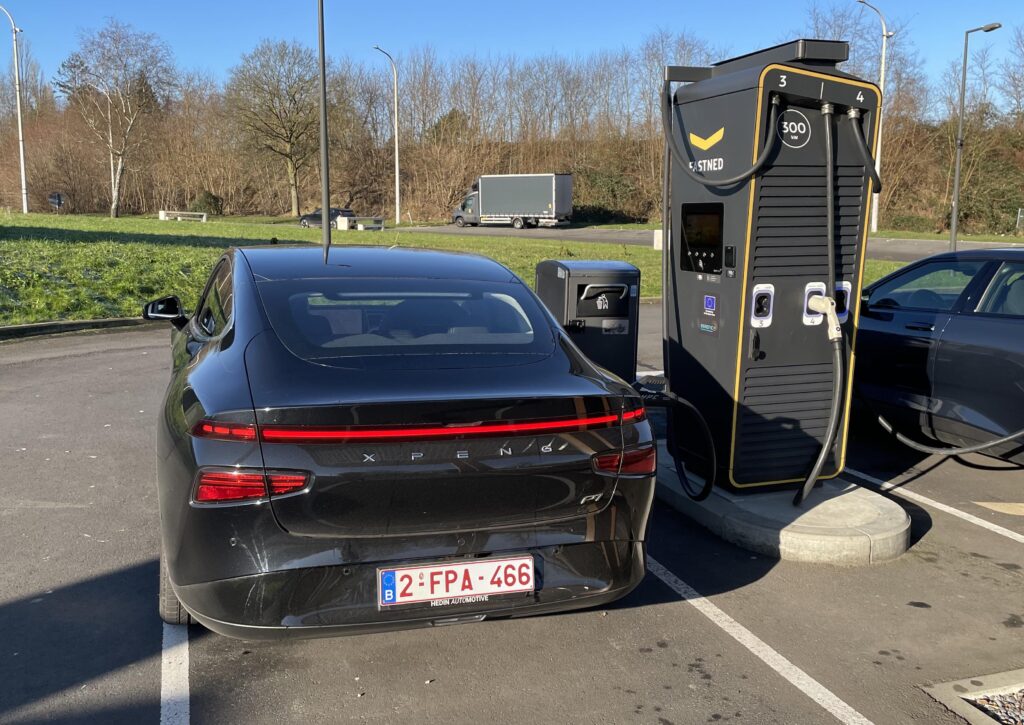
While driving to the fast charger, I put the fast charger destination into the GPS. A symbol then appeared on the dashboard that the battery was being preheated.
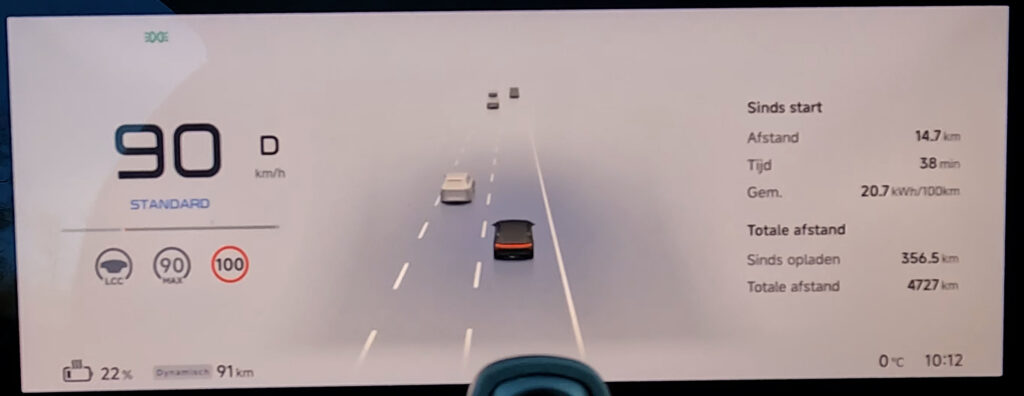
At the beginning of the test, the battery is only 16%. It is 0 degrees outside. We immediately reached a charging speed of 101 kW almost after starting charging.
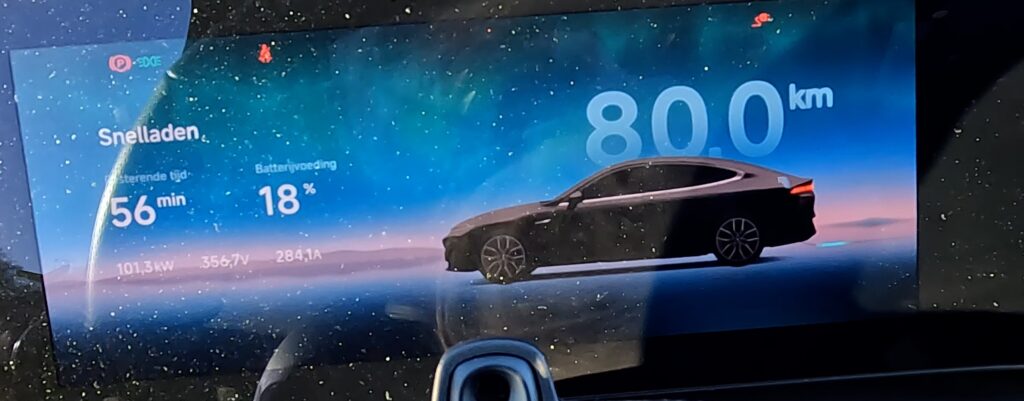
After 10 minutes of charging, we were at a charging speed of 120.3 kW and the battery rose to 37%.
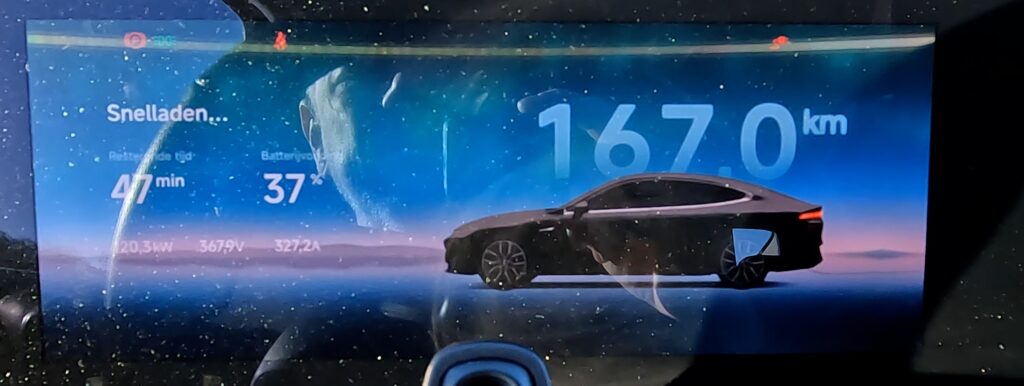
After 20 minutes we were at 60% and after half an hour of charging the battery was at 79%. At 30 minutes of charging we gained 279 km of range. It was very busy at the fast chargers. Possibly this also had an impact on not reaching a peak charging speed of 175 kW.
I have not done an AC charging test, but XPENG itself says the AC charging time is 10h to charge from 0% to 100% at a rate of 11 kW.
| Start test | After 10 min. | After 20 min. | After 30 min. | |
|---|---|---|---|---|
| Range indicator (km) | 73 | 167 | 269 | 352 |
| Increase range (km) | 94 | 102 | 83 | |
| Battery (%) | 16% | 37% | 60% | 79% |
| Charging speed (kW) | 120,3 | 112,7 | 83,9 | |
| Temperature (°C) | 0 | 1 |
I am now going to test the range at lower speeds in town and on regional roads. I want to know what the maximum range of this car could be. At the beginning of this part of the test, the battery is at 76%. The temperature was between -1 and 4 degrees. I made a test drive of 80 km, first in Brussels. Then I left the city and drove on small regional roads.
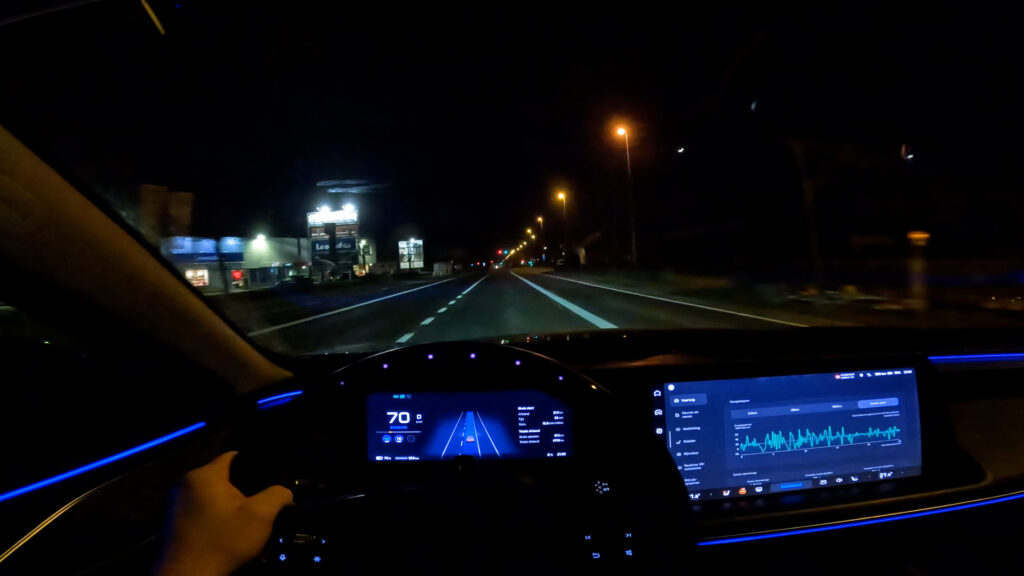
It was in an urban area, but with many opportunities for continuous driving, mostly between 50-70 mph. I did the ride at night so as not to be bothered by traffic.
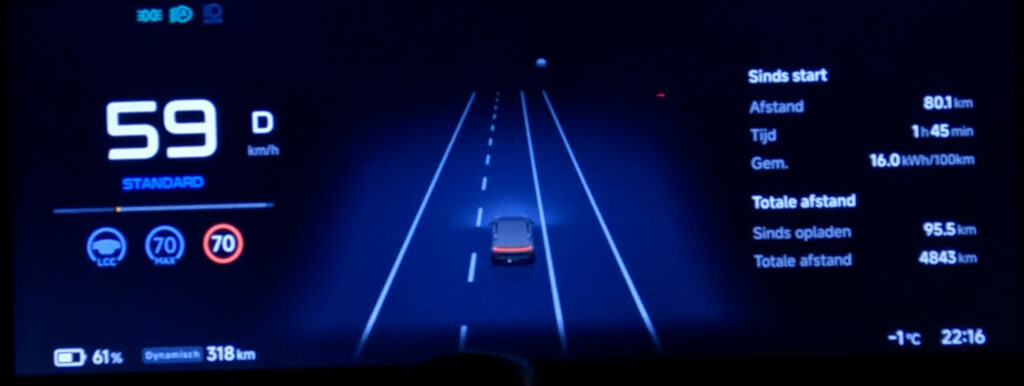
Let’s take a look at my results. After a test drive totaling 80 km, I drained the battery to 61%. The average consumption ended up being 16 kWh and the estimated range is 517 km.
| Battery% | Distance driven (km) | Consumption (kWh) | Temperature (°C) | Estimated range (Km) |
|---|---|---|---|---|
| 76% | since start | 4 | start test | |
| 74% | 8,3 | 18,1 | 0 | 457 |
| 73% | 16,1 | 15,4 | 1 | 537 |
| 72% | 20 | 16,1 | 2 | 514 |
| 71% | 25,4 | 15,9 | 1 | 520 |
| 70% | 30,3 | 15,6 | -1 | 530 |
| 69% | 35,1 | 15,9 | 0 | 520 |
| 68% | 40 | 16 | 2 | 517 |
| 66% | 50 | 15,8 | 0 | 523 |
| 65% | 55,1 | 15,9 | 0 | 520 |
| 64% | 60 | 16,1 | 1 | 514 |
| 63% | 65,1 | 16,1 | 2 | 514 |
| 62% | 70 | 16 | 0 | 517 |
| 61% | 75,1 | 16 | -1 | 517 |
| 61% | 80 | 16 | -1 | 517 |
In conclusion, the range of the XPENG P7 RWD Long Range is somewhere between 449 km and 517 km, based on similar driving conditions and measured in cold temperatures between -1 and 7 degrees. I suspect you will get more range at much higher temperatures and lower range in winter at even lower temperatures.

Test driver
© 2024 Proefritten All Rights Reserved.
Add your first comment to this post